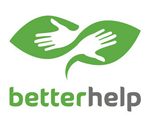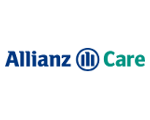Generally, public facilities tend to be underfunded, bureaucratic, inefficient and hopelessly over-subscribed, whereas many private facilities are excellent – as good as any found in Australasia, Europe and the US.
To find a general practitioner (GP) – i.e. a family doctor – in your area, contact the Health Professions Council of South Africa (Tel. 012-338 9300 or 6680, www.hpcsa.co.za ), with which all medical practitioners must be registered.
Public hospitals and clinics in South Africa are usually reasonably well equipped and staffed; but are often very overcrowded with patients, and you need to wait for a long time to be seen (by staff who are usually overworked and sometimes indifferent). You must often pay for treatment.
Although the state contributes around 40 per cent of all healthcare expenditure, the public health system has to serve just over 80 per cent of the population. Public health uses around 11 per cent of the government’s budget, which is allocated to the nine provinces. The amount of funds they receive and the efficiency of their use varies considerably. Poorer provinces, such as the Eastern Cape, offer a much lower standard of healthcare than richer provinces like Gauteng and the Western Cape.
The South African public sector health system is trying to improve its service. It’s now split into 42 health regions and 162 health districts, and a new administrative structure is being developed. Since 1994, over 700 clinics have been built or upgraded, almost 2,300 clinics given new equipment and 125 mobile clinics introduced. There are now over 3,500 clinics in the public sector, offering free healthcare to children under six, and to pregnant and breastfeeding women.
To alleviate a long-standing shortage of doctors, 450 foreign doctors have been employed, many of them from Cuba. The government has also made it easier for other foreign doctors to practise in South Africa, and newly-qualified South African doctors and chemists now undertake a year of compulsory community service in understaffed hospitals and clinics. Unfortunately, the country still suffers from a medical ‘brain drain’, with countries like the UK and Canada keen to recruit South African doctors who have a good reputation.
Charges
If you’re treated at a state hospital in South Africa and are a non-resident, you must pay as South Africa has no reciprocal health agreements with other countries. Even citizens and residents often have to pay, the amount depending on your salary and how many dependants you have (hospitals have rating scales to calculate the amount to charge you).
Charges are often low (by Western standards), however: for example, pensioners pay only around R13 (€1.30) for a consultation, medicine and in some cases tests. The maximum charge (for top income earners) is R55 (€5.70) for a consultation, although you must pay extra for medicine and tests. Top-earning patients pay R485 (€50) per day for hospital stays, excluding medicine and theatre costs.
Specialist treatment is available at state hospitals, but waiting lists can be very long and it’s recommended to opt for private treatment if you can afford it.



